What are the construction standards in Chapala and Ajijic, Mexico?
Thomas Hellyer - Chapala Home Sales
I just had some projects done in our house-- we built a guest house, a pool, and a large outdoor terrace, so I can speak about the construction standards here in Chapala and Ajijic based on personal experience as well as from experience from my real estate business, which often is part of the construction business if my clients are looking to build a new house.
The construction here in Chapala and Ajijic is very rarely wood, but rather, cement, bricks, and blocks, which are...
The construction here in Chapala and Ajijic is very rarely wood, but rather, cement, bricks, and blocks, which are...
I just had some projects done in our house-- we built a guest house, a pool, and a large outdoor terrace, so I can speak about the construction standards here in Chapala and Ajijic based on personal experience as well as from experience from my real estate business, which often is part of the construction business if my clients are looking to build a new house.
The construction here in Chapala and Ajijic is very rarely wood, but rather, cement, bricks, and blocks, which are readily available materials here for construction. They are less expensive and they do best in our climate here because they help keep homes cool on the warm days and keep the homes warm on the cooler days.
In order to build a house, a contractor or an architect must prepare architectural drawings that have to be approved by the municipality. Part of this process is to have a soil study done to determine what depth and type of foundation must be used for the construction. Independent engineers corroborate the information from the type of house, how big the house is going to be, etc., with the soil studies in order to determine how much rebar should be put in, and other considerations. There also has to be proper plumbing put into the design, which goes with making sure that all the sewage and plumbing is done correctly. We do not have the same electrical requirements as you would find in North America, but mostly the houses do not have as big a draw on electricity here. The stoves, ovens, water heaters, and dryers that use electric in the US, usually use gas here in Mexico. When you’re building a house, you still need to go through the permitting process for the electric system. Once that is all approved then you can begin the process.
The standards are there but there are certainly some builders who would offer to build without permits and just do it their way to save you some money, perhaps. Buyer beware. Homes that are built with formal construction companies will be built with the process that I described above and it will have regular visits from the municipality’s urbanization officers to make sure that the process is going the right way. Then they can do a final sign off that the property is habitable and that the builders have used all the proper techniques before people can actually move into them.
It is possible for a house to be built without getting permits. You are supposed to get permits but if you do all your construction behind a 10-feet high wall, maybe no one knows about it. They will find out someday when you sell the house and they come to take the tax appraisal for it. They will realize that there was an extra 2,000 square feet of construction and then they will fine you. It is very similar to the process in the US.
The construction here in Chapala and Ajijic is very rarely wood, but rather, cement, bricks, and blocks, which are readily available materials here for construction. They are less expensive and they do best in our climate here because they help keep homes cool on the warm days and keep the homes warm on the cooler days.
In order to build a house, a contractor or an architect must prepare architectural drawings that have to be approved by the municipality. Part of this process is to have a soil study done to determine what depth and type of foundation must be used for the construction. Independent engineers corroborate the information from the type of house, how big the house is going to be, etc., with the soil studies in order to determine how much rebar should be put in, and other considerations. There also has to be proper plumbing put into the design, which goes with making sure that all the sewage and plumbing is done correctly. We do not have the same electrical requirements as you would find in North America, but mostly the houses do not have as big a draw on electricity here. The stoves, ovens, water heaters, and dryers that use electric in the US, usually use gas here in Mexico. When you’re building a house, you still need to go through the permitting process for the electric system. Once that is all approved then you can begin the process.
The standards are there but there are certainly some builders who would offer to build without permits and just do it their way to save you some money, perhaps. Buyer beware. Homes that are built with formal construction companies will be built with the process that I described above and it will have regular visits from the municipality’s urbanization officers to make sure that the process is going the right way. Then they can do a final sign off that the property is habitable and that the builders have used all the proper techniques before people can actually move into them.
It is possible for a house to be built without getting permits. You are supposed to get permits but if you do all your construction behind a 10-feet high wall, maybe no one knows about it. They will find out someday when you sell the house and they come to take the tax appraisal for it. They will realize that there was an extra 2,000 square feet of construction and then they will fine you. It is very similar to the process in the US.
Posted February 1, 2016
Luzma Grande - Ajijic Concierge Services
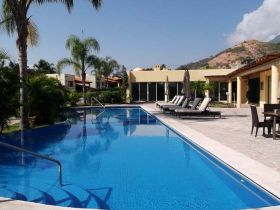 I don’t recommend constructing your own home in Chapala or Ajijic because most of the time, you will find that the materials that you would bring for your house are not the same as the materials that you would usually get in other parts of Mexico. There is no diversity in construction materials here in Chapala and Ajijic so you are very limited. If you buy a house from a developer, you will get more value for your money because they construct many houses here so they have the...
I don’t recommend constructing your own home in Chapala or Ajijic because most of the time, you will find that the materials that you would bring for your house are not the same as the materials that you would usually get in other parts of Mexico. There is no diversity in construction materials here in Chapala and Ajijic so you are very limited. If you buy a house from a developer, you will get more value for your money because they construct many houses here so they have the... I don’t recommend constructing your own home in Chapala or Ajijic because most of the time, you will find that the materials that you would bring for your house are not the same as the materials that you would usually get in other parts of Mexico. There is no diversity in construction materials here in Chapala and Ajijic so you are very limited. If you buy a house from a developer, you will get more value for your money because they construct many houses here so they have the materials for them.
I don’t recommend constructing your own home in Chapala or Ajijic because most of the time, you will find that the materials that you would bring for your house are not the same as the materials that you would usually get in other parts of Mexico. There is no diversity in construction materials here in Chapala and Ajijic so you are very limited. If you buy a house from a developer, you will get more value for your money because they construct many houses here so they have the materials for them. Another option is to buy a house that is already constructed and then modify it to your preference. The third option is to buy a lot but there are not a many available lots with good prices here. I don’t see a lot of people come and construct their own house here. I don’t see people construct a house of their dreams but they could already find the house of their dreams already constructed.
The houses here in Chapala and Ajijic are very well constructed but you should always have an inspector check the house to be sure. When you’re in Chapala and Ajijic, you really get to know “who is who” very quickly. There are real estate companies that are known by most people because they are very honest and you could trust them when they say that a certain house is not good for you. Even if they are selling that house, they would tell you if they have another one that better suits you. Relevant to construction, I haven’t heard anybody complain about a house falling down or a house that needs repairs unless if you buy a very cheap house that could mean that there is some fixing that needs to be done.
When I lived in London, I was in a boarding school and it was just an old construction. We had a terrible heating system. I was dying there because of the cold weather. I didn’t really like England. In Italy, we had the same problem because it was cold and the heating system used water like the old times. It was coming from a central heating system but it was water and not air so I felt cold again. I was thinking, “Oh my god, I need a warm place.” Then I went to Canada. Don’t ask me how I was able to survive Canada at -52 degrees in Edmonton. For some reason, I didn’t feel cold in Canada because they have central heating everywhere. When you go to church, it’s heated. You can go to the malls, and it’s heated. You can visit your friend and their house is heated. Your car has heating, too, so the only time you’ll feel cold in Canada is when you walk from house to your car or from your car to someplace else. If I compare all these three places to Ajijic, Ajijic is paradise. You won’t ever feel cold ever again in Ajijic. It is of course cooler in the winter but all you have to do is wear a sweater and you’re “good to go.” As a Mexican, I easily get cold compared to other people. People who come from Canada wear shorts in January when it’s coldest here and they are okay.
(Home with a pool near the village of Ajijic, Mexico, pictured.)
Posted June 11, 2016
Mark O'Neill
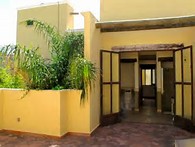 Chapala and Ajijic have very simple construction techniques compared to what we are used to in the United States being that they mostly have brick, mortar, and cement construction. What I have seen are very sound and stable places that just by the nature of the construction materials, tend to be very well insulated to retain heat in the evening and also protect you during the day. The massively thick walls absorb heat.
Chapala and Ajijic have very simple construction techniques compared to what we are used to in the United States being that they mostly have brick, mortar, and cement construction. What I have seen are very sound and stable places that just by the nature of the construction materials, tend to be very well insulated to retain heat in the evening and also protect you during the day. The massively thick walls absorb heat. As anywhere, there are a variety of...
 Chapala and Ajijic have very simple construction techniques compared to what we are used to in the United States being that they mostly have brick, mortar, and cement construction. What I have seen are very sound and stable places that just by the nature of the construction materials, tend to be very well insulated to retain heat in the evening and also protect you during the day. The massively thick walls absorb heat.
Chapala and Ajijic have very simple construction techniques compared to what we are used to in the United States being that they mostly have brick, mortar, and cement construction. What I have seen are very sound and stable places that just by the nature of the construction materials, tend to be very well insulated to retain heat in the evening and also protect you during the day. The massively thick walls absorb heat. As anywhere, there are a variety of risks to this type of construction, depending on the price point. There are few little shacks or hovels or anything of that nature. It is a very family-oriented place and so most of the structures are designed or built with a family in mind and of course the wonderful, loving nature of the people. They use an awful lot of brick. Very little, if any, wood is utilized in the construction in Chapala and Ajijic. Overall, the construction standards in Chapala and Ajijic might be simple but they are of good quality.
(Modern home in Lake Chapala, Mexico, pictured.)
Posted July 18, 2016
Amaranta Santos - Eager y Asociados
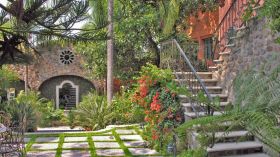 The construction standards in Chapala and Ajijic are exactly like the anywhere else in the country of Mexico. The city is very strict about giving out permits and in you presenting your project. The construction standards would vary depending on who you hire and who you trust. There is a lot of people that I would recommend. They are not even educated people but they have been working on this for so long that they know a little bit more probably more than engineers.
The construction standards in Chapala and Ajijic are exactly like the anywhere else in the country of Mexico. The city is very strict about giving out permits and in you presenting your project. The construction standards would vary depending on who you hire and who you trust. There is a lot of people that I would recommend. They are not even educated people but they have been working on this for so long that they know a little bit more probably more than engineers. ...
 The construction standards in Chapala and Ajijic are exactly like the anywhere else in the country of Mexico. The city is very strict about giving out permits and in you presenting your project. The construction standards would vary depending on who you hire and who you trust. There is a lot of people that I would recommend. They are not even educated people but they have been working on this for so long that they know a little bit more probably more than engineers.
The construction standards in Chapala and Ajijic are exactly like the anywhere else in the country of Mexico. The city is very strict about giving out permits and in you presenting your project. The construction standards would vary depending on who you hire and who you trust. There is a lot of people that I would recommend. They are not even educated people but they have been working on this for so long that they know a little bit more probably more than engineers. That would be a lot cheaper and their constructions would be really well made because they are familiar with the soil here. The soil is very different depending on the area. So the convenience of hiring someone here is that they know where you are going to build so they will adjust some things for your house to be the best it can be relative to the area where you are building.
If someone comes from Guadalajara to build your house, he might not know that in Riberas del Pilar the percolation is different, so they would need to build a house in a position that won’t ever get flooded by big rains, for example. We always recommend to our clients that if they are coming to build, they should talk to local people first and they can surely find someone to fulfill their needs. It will be a lot more satisfactory and cheaper.
The quality of the construction here in Chapala and Ajijic is great. The materials being used here are Grade A, starting from the metal, to brick, cement, etc. We are an exporter of cement in Mexico so you will get everything that you need for your construction and it will be high quality.
The prime matter is everything. And after prime matter, if you have the budget and you let your builder know that you will pay for what we call castillos, which are the metal structures that are used in every meter to sustain a certain amount of brick, you will have a well built home. For example, there are some people who would say, “No, instead of three, you put two.” That will be your responsibility. If you’re willing to make a good construction with the standards that you are presented with, and you don’t want to make cuts here and there, you’re going to get a great and sturdy construction that will withstand whatever. The other thing is that we are not in an area where there is a lot of earthquakes or things that would put your property in danger, so your construction will be pretty stable.
We don’t have a building inspector and zoning regulations like they do in the United States. It doesn’t work the same way here. The government will ask you to present them your project and they will trust you because that project is for you so if you want to do it right or wrong it is your responsibility because it is your project. They will send an inspector every once in a while just to see that you’re not building something you didn’t report you were going to build, but the quality or standards of construction is your responsibility. They trust that you wouldn’t want the roof to fall on your head.
If you are going to buy a house that is already built, there are really great inspectors here that can help you with that. As a real estate agent, the first thing that I tell my client is, “Okay, you like this house? Perfect, let’s get it inspected.” We have very good inspection service providers that are very thorough and they will surely let you know, for example, if a certain outlet needs to be changed because it might have problems very soon.
(Home with extensive brickwork, Ajijic, Mexico, pictured.)
Posted August 23, 2016
Mirna Segura - Ajijic Rentals
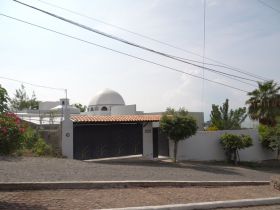 The construction standard in Chapala and Ajijic varies a lot because people use different architects and these architects have different ideas. You can still find colonial Mexican houses here. At the same time, you can see many new small housing developments that have more American-style homes.
The construction standard in Chapala and Ajijic varies a lot because people use different architects and these architects have different ideas. You can still find colonial Mexican houses here. At the same time, you can see many new small housing developments that have more American-style homes. The constructions here in Chapala and Ajijic are made of brick and rebar, unlike in the US where they use wood. So the houses here in Mexico, in general, are...
 The construction standard in Chapala and Ajijic varies a lot because people use different architects and these architects have different ideas. You can still find colonial Mexican houses here. At the same time, you can see many new small housing developments that have more American-style homes.
The construction standard in Chapala and Ajijic varies a lot because people use different architects and these architects have different ideas. You can still find colonial Mexican houses here. At the same time, you can see many new small housing developments that have more American-style homes. The constructions here in Chapala and Ajijic are made of brick and rebar, unlike in the US where they use wood. So the houses here in Mexico, in general, are very solid constructions.
If you are building a house here in Chapala and Ajijic, you have to go to the city hall and secure your permits. The constructions here in Chapala and Ajijic are not only strong but they are also artistic. Some people even use big cupolas. Building in Chapala and Ajijic is more than actually building a house but it is also an art. Cupolas are really amazing when you see if for the first time.
(Home with a domed cupola, Ajijic, Mexico, pictured.)
Posted August 26, 2016
Chris Gruenwald - Biencom Real Estate
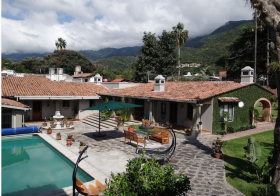 The construction standards in Chapala and Ajijic are the same. The same builders and architects are building in Chapala and Ajijic so there is no difference between those two.
The construction standards in Chapala and Ajijic are the same. The same builders and architects are building in Chapala and Ajijic so there is no difference between those two. If you look at most places in Mexico these days, the construction standards are pretty much on par. It used to be that construction standards in Mexico were uneven. For example, Chapala and Ajijic used to have the best construction standards around because this is one of the first...
 The construction standards in Chapala and Ajijic are the same. The same builders and architects are building in Chapala and Ajijic so there is no difference between those two.
The construction standards in Chapala and Ajijic are the same. The same builders and architects are building in Chapala and Ajijic so there is no difference between those two. If you look at most places in Mexico these days, the construction standards are pretty much on par. It used to be that construction standards in Mexico were uneven. For example, Chapala and Ajijic used to have the best construction standards around because this is one of the first areas that adopted American construction standards. Lately, I’ve been touring new developments on the coast of Oaxaca and similar places and I noticed that they have stepped up their game, too.
Mexicans are really good at construction. You get earthwork, PVC plumbing, modern installations, and carpentry. If you compare the building standards in Mexico to countries in Central America such as like Costa Rica and Panama, the construction standards in Mexico are significantly higher. That probably has to do with their economy or the availability of materials. We are a 10-hour truck drive from Texas so you can truck dishwashers down here all day long. A lot of the windows here are from Europe. Because we are close the US, it is easy to get whatever you want.
Inspectors do come out to conduct inspections and you would have to secure permits if you are building but it is 10% as labor-intensive as it would be in San Diego, where I come from. The inspectors have to check your construction project before they give you the permit to build it. They have to check it during the building process, and they have to OK that it was done as proposed once you are done building. Building a house here in Mexico is a lot less hassle than in the US.
If you are buying a house and you have any doubt as to the quality of the construction, you can hire a home inspector. There are North American home inspection providers here in Chapala and Ajijic from Canada, the US, and elsewhere who are very familiar with the local construction process and who will provide you with a report. Usually, your realtor and broker should be able to tell you, as well. Most of us have construction experience or at least have watched a few houses go up. If there is any red flags, we should be able to notice them.
(Hacienda-style home, Ajijic, Mexico, pictured.)
Posted September 10, 2016
Marvin Golden
.jpg) Officially, and especially if you are building a new house in Chapala and Ajijic, you need to draw plans, take them to the city hall, and have city hall approve your plans before you can begin construction.
Officially, and especially if you are building a new house in Chapala and Ajijic, you need to draw plans, take them to the city hall, and have city hall approve your plans before you can begin construction. On behalf of clients, I have worked with builders where we will sit down with them, go over the construction plan room by room, including every outlet, every window, every door opening, etc., so that we get a price and they don’t get an opportunity to do...
.jpg) Officially, and especially if you are building a new house in Chapala and Ajijic, you need to draw plans, take them to the city hall, and have city hall approve your plans before you can begin construction.
Officially, and especially if you are building a new house in Chapala and Ajijic, you need to draw plans, take them to the city hall, and have city hall approve your plans before you can begin construction. On behalf of clients, I have worked with builders where we will sit down with them, go over the construction plan room by room, including every outlet, every window, every door opening, etc., so that we get a price and they don’t get an opportunity to do lots of add-ons and price increases. Then I will recommend to the buyer that they hire the local engineer to come on a weekly basis and spend a few minutes at the construction site in order to check the rebar, cement, plans, and so on to make sure that the building is constructed in the proper way and with proper quality. Otherwise, the details of the construction can be covered up and you would not know, for example, what is inside the walls and the foundation.
If you are buying a house that is already built, we always recommend that you have a building inspection done. We do this primarily to protect ourselves because we would hate to sell you a house and have to come back and say later, “I have a $5,000 roofing problem,” or, “My septic field has collapsed.”
What generally happens, though, is the inspectors also bring up a list of maintenance issues. They would say that you should paint the propane tank, the knob on the cupboard is loose, there is a tear on the screen, etc. Sometimes those tiny items scare people. So we tell our clients that every little flaw you can fix or not fix, according to your pleasure, but you should have your house inspected. Our inspector does not do engineering inspections, so if there is some serious cracking or some other issue, you may have to bring in an engineer to make sure that there is not a problem with the foundation.
Posted October 18, 2016
Francisco Araiza - interlago realestate
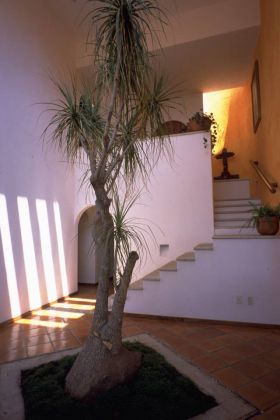 The most common type of construction in Chapala and Ajijic is made of bricks. Depending on the lot, you can build a foundation or you can use platforms if you are in the mountains. But overall, the houses here in Chapala and Ajijic are very strong and they are made by hand.
The most common type of construction in Chapala and Ajijic is made of bricks. Depending on the lot, you can build a foundation or you can use platforms if you are in the mountains. But overall, the houses here in Chapala and Ajijic are very strong and they are made by hand. If you are buying a house that is already built, you could go to the public registry in Chapala and check the history of the house and the lot that you’re going to buy. When you...
 The most common type of construction in Chapala and Ajijic is made of bricks. Depending on the lot, you can build a foundation or you can use platforms if you are in the mountains. But overall, the houses here in Chapala and Ajijic are very strong and they are made by hand.
The most common type of construction in Chapala and Ajijic is made of bricks. Depending on the lot, you can build a foundation or you can use platforms if you are in the mountains. But overall, the houses here in Chapala and Ajijic are very strong and they are made by hand. If you are buying a house that is already built, you could go to the public registry in Chapala and check the history of the house and the lot that you’re going to buy. When you sell a house here in Mexico, the notary will take care of the certificate, to make sure that, when you sign your certificate, everything has been already checked.
If you are going to build a house in Chapala or Ajijic, you have to get permits at the municipal office in Chapala and you have to follow their specifications on the project. They will also tell you how much you need to pay in taxes for the construction per square meter based on what kind of construction you’re building. We have what is called High Construction, Middle Construction, and Low Construction. There are different parameters for each of these categories of construction. They will let you know what kind of construction you’re building based on the quality that you are planning to build. The level of quality has to do with how expensive the house is.
The Interlago listings that we have are nice quality constructions. They are made of red brick and not cement blocks, which is of higher quality because it prevents moisture from going into the walls. There are a lot of very nice constructions in the area of Interlago.
(Foyer of an Interlago home, Lak Chapala, Mexico, pictured.)
Posted October 26, 2016
Juan Eufracio Marquez Flores - LM&A Immigration and Legal Services
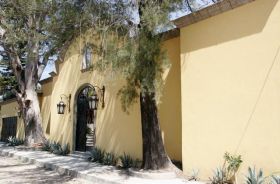 The construction standards in Ajijic and Chapala depend on how expensive is the house.
The construction standards in Ajijic and Chapala depend on how expensive is the house. My suggestion is to get value, get estimates from different contractors or architects. My advice is to always ask the contractor or the architect if they can refer or if you can call one of the clients to ask about their experience with the contractor being considered, because most of the contractors and the architects will say they have the experience and then later...
 The construction standards in Ajijic and Chapala depend on how expensive is the house.
The construction standards in Ajijic and Chapala depend on how expensive is the house. My suggestion is to get value, get estimates from different contractors or architects. My advice is to always ask the contractor or the architect if they can refer or if you can call one of the clients to ask about their experience with the contractor being considered, because most of the contractors and the architects will say they have the experience and then later there could be some problems.
I have not heard of a house that collapsed but the problem starts with the details that sometimes in one or two years there might be a little bit of leak, not a lot of water coming in, or problems with the plumbing or electricity. These are usually the most common things.
There is a permitting process, which can be divided into two categories. One, the contractor can provide the permit and there are two permits. One is from the local authorities which means the contractor has to go to the City Hall to get the permit and in order to have that they have to manifest the area of construction, the details of if it’s going to be one or two floors, etc. Once they have that they have to have an architect drawing, like a plan, and then also the second permit is IMSS and that is really important. If the contractor does not give their customer the IMSS release, when the owners want to sell their house the realtors would ask for the release from IMSS. Why? Because if a contractor does a remodeling or a new house and does not have the IMSS release, the IMSS can seek payment and penalties from the owner of the construction up to 10 years later. The construction workers need to be registered in the IMSS. The release you should receive from your contractor states that the construction was done and the construction workers received IMSS, which is the medical attention. So it’s really important because if one of the contractors does not provide IMSS and one of the workers gets into an accident or dies, one option is that IMSS can come to the homeowner and the homeowner would have to pay for the medical costs related to the accident of the worker. So if you are the owner of a construction project, make sure that you have a signed contract by the contractor where the contractor guarantees that they are going to be in charge of the workers, that there is not any legal liability or medical liability of all the workers that are working. The homeowner should be protected because usually the contractor is the one that supposed to get the construction permit and the IMSS permit to do that. So once they have a really good contract then if something happens and the contractor did not get the IMSS, did not get the permit and some accident happens to the workers then automatically it’s the responsibility of the contractor if there is a contract. But if there’s not a contract then there is a good possibility that at the end the homeowner is going to be responsible. Anywhere in Mexico, just as in the US, ignorance of the law is no protection from it.
These permits are when the construction is not in a housing development or a private condo area. When a foreigner buys a property in a private condominium area or a housing development, they also have to get approval from the neighbors association of that condo in order to approve the construction, which adds a third permit: the condo from the neighbors association inside of the condo then the construction permit and then the IMSS permit. If a person lives in the condo and goes directly to the City Hall to get a work permit, they will not issue it unless they have approval of the committee or the neighbors association that belongs to that housing development or that condominium.
(Traditional home, Ajijijc, Mexico, pictured.)
Posted December 2, 2016
Flip Nicholson - Fenix Real estate
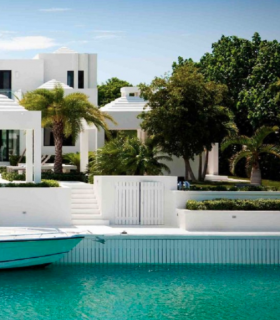 There aren’t any construction standards in Chapala and Ajijic. I’m involved in construction more than anything because that’s my background. That’s why I was always intrigued by how they put up houses here in Chapala. The materials are stone, rock, or concrete. It’s a 12-inch wall; it’s thick and it’s heavy.
There aren’t any construction standards in Chapala and Ajijic. I’m involved in construction more than anything because that’s my background. That’s why I was always intrigued by how they put up houses here in Chapala. The materials are stone, rock, or concrete. It’s a 12-inch wall; it’s thick and it’s heavy. I remember when I took my stepson, who was raised here in Mexico, to the disaster area in Louisiana...
 There aren’t any construction standards in Chapala and Ajijic. I’m involved in construction more than anything because that’s my background. That’s why I was always intrigued by how they put up houses here in Chapala. The materials are stone, rock, or concrete. It’s a 12-inch wall; it’s thick and it’s heavy.
There aren’t any construction standards in Chapala and Ajijic. I’m involved in construction more than anything because that’s my background. That’s why I was always intrigued by how they put up houses here in Chapala. The materials are stone, rock, or concrete. It’s a 12-inch wall; it’s thick and it’s heavy. I remember when I took my stepson, who was raised here in Mexico, to the disaster area in Louisiana after Katrina to work. When he saw those splintered homes, he said, “Pops, no wonder they’re falling apart. Look, they’re just sticks. Look how they build these things!” All he ever saw in Mexico were rocks, concrete, block, and mortar- all heavy-duty stuff. Nothing’s going to knock it over. A hurricane can blow through here, and it may take off a roof and a few tiles, but it’s not going to move that wall. Water will, but the wind won’t. Up north, the homes are made of sticks. Tornadoes go through there and make them look like a pile of toothpicks.
The construction here in Chapala is heavy, and it lasts for a very long time. Over the last two decades, we’ve seen US standards come in to Chapala big time. You can go to the hardware store and buy a grounded plug, and in some of the old homes, you’re going to see two pronged plugs, and you’re going to think, “Oh my God, really?”
Now, they’re putting in US standards when building here in Chapala. Galvanized pipe for plumbing is a thing of yesteryear. If you find galvanized pipe, it means it’s an old house, and you’re going to rip it. I remodeled my house and ripped out a bunch of galvanized pipes, which are not used anymore. Now, plumbing uses either PVC, or green or blue plastic with a 50-year guarantee, which is good stuff and lasts a long time. Although it’s a little bit pricier, it lasts forever, especially when you put it in a concrete wall, in which case it’s not going to corrode.
Plumbing and electrical standards have improved immensely in Chapala and Ajijic. Mexican builders have also figured out ways to do door jams and window frames, and we’ve quit using wood and plain painted metal that can rust. Everything’s gone to aluminum and PVC. We’ve got new materials.
The only drawback in the construction industry here in the Chapala area is that we haven’t seen enough new engineering. I see Pablo building a house the same way his father built a house, in the same way his father’s father built a house. They still do old time construction, and it doesn’t hold up as well. You’ll see cracked foundations and sagging doors and jams sometimes in the cases where they didn’t learn the new ways to build homes.
I have many architect friends who have been to school and say, “No, we don’t do it that way anymore. This is how we do it.” We use poured concrete- there are actually concrete trucks that you can order who will come pour your foundation in one pouring, and it’s very critical to have a solid foundation to make sure it’s poured all at once and concrete is cured properly.
When you get a good mix without a bunch of dirt, you’re going to get good results. It’s improving all the time- you’ll see old and new construction side by side. Yes, we have subdivisions with cookie-cutter type homes in which you have four different options. But we got some pretty reliable builders who have been doing it for a while. Maybe it’s not the top end, but it’s not going to fall apart on you, either.
The construction in the Chapala and Ajijic area has two standards: there’s one that old dad used to do, and there’s the new standard coming in from Guadalajara that says, “No, this is how we build it now,” and has taken over the subdivisions. Maybe not the villages yet, but it’s taken over the subdivisions where you can see good quality construction that’s going to hold up for a while.
Posted January 28, 2017
Karen Herrtwich - S&S Auto
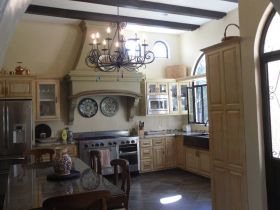 In Chapala and Ajijic, there are no inspection standards, so it’s possible for you to hire a contractor who's going to do a really terrible job and cause a lot of problems with your house, so buyer beware.
In Chapala and Ajijic, there are no inspection standards, so it’s possible for you to hire a contractor who's going to do a really terrible job and cause a lot of problems with your house, so buyer beware. It's all about "Buyer Beware" in Mexico whether you're buying a car or doing a renovation. You always need to do your research to find out who is a good contractor. Don't go with the guy who gives you the best quote because...
 In Chapala and Ajijic, there are no inspection standards, so it’s possible for you to hire a contractor who's going to do a really terrible job and cause a lot of problems with your house, so buyer beware.
In Chapala and Ajijic, there are no inspection standards, so it’s possible for you to hire a contractor who's going to do a really terrible job and cause a lot of problems with your house, so buyer beware. It's all about "Buyer Beware" in Mexico whether you're buying a car or doing a renovation. You always need to do your research to find out who is a good contractor. Don't go with the guy who gives you the best quote because chances are you are going to get what you paid for. It's not like an inspector will come by and say, "Okay, you passed. We're going to give you the permit." It doesn't work that way. You can hire somebody who's really good at doing a horrible job because he doesn't know what he's doing. It's up to the consumer to make sure he does his research.
(Custom kitchen, Ajijic, Mexico, pictured.)
Posted April 19, 2017
Roberto Millan - Roberto Millan Design and Construction
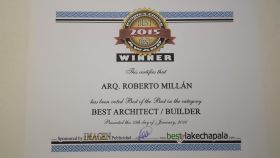 Construction in Chapala and Ajijic have different standards and quality. First off, I've seen through the years that when foreigners come to Chapala and Ajijic, their idea is that architects here are the same as architects in the United States or Canada, wherein architects are very specialized as designers, while others are the builders. In contrast, here in Chapala and Ajijic, most of the architects are also designers and builders. When I tell my clients that I'm a...
Construction in Chapala and Ajijic have different standards and quality. First off, I've seen through the years that when foreigners come to Chapala and Ajijic, their idea is that architects here are the same as architects in the United States or Canada, wherein architects are very specialized as designers, while others are the builders. In contrast, here in Chapala and Ajijic, most of the architects are also designers and builders. When I tell my clients that I'm a... Construction in Chapala and Ajijic have different standards and quality. First off, I've seen through the years that when foreigners come to Chapala and Ajijic, their idea is that architects here are the same as architects in the United States or Canada, wherein architects are very specialized as designers, while others are the builders. In contrast, here in Chapala and Ajijic, most of the architects are also designers and builders. When I tell my clients that I'm a builder, sometimes they are surprised because they think that I'm just a designer, as opposed to just being an architect.
Construction in Chapala and Ajijic have different standards and quality. First off, I've seen through the years that when foreigners come to Chapala and Ajijic, their idea is that architects here are the same as architects in the United States or Canada, wherein architects are very specialized as designers, while others are the builders. In contrast, here in Chapala and Ajijic, most of the architects are also designers and builders. When I tell my clients that I'm a builder, sometimes they are surprised because they think that I'm just a designer, as opposed to just being an architect.There are also some foreigners who hire only contractors in Chapala and Ajijic to build their houses. They get a design from a magazine or book and hire a "maestro" (“contractor” in Spanish). The quality of houses in Chapala and Ajijic built by a "maestro" will depend on the owner's specifications. The owner can specify what they want so the maestro will know what to do. However, in general, the quality and standards of a house built by an architect is better than those built by a "maestro." Some architects propose or give ideas and suggestions to the client.
To be an architect here in Mexico, you need a degree from a university, be licensed, register with the state or federal government, and be assigned a number, like a doctor.
On the other hand, a "maestro" or general contractor in Mexico may be someone who used to be a gardener or a painter and who just started to work in construction. After a year or two of construction experience, he becomes a contractor. They don't need to be licensed.
That's a big problem for us professionals who study in the university. We prepare, but our competition are the contractors. As I wrote above, contractors don't need to be registered to build. There are some contractors that have more work than me as an architect.
When you go to city hall to get a permit for a house, the drawings must be signed by an architect or engineer with a degree and be officially registered. There are some engineers or architects who ask for a fee to sign drawings or plans because city hall will not stamp a permit if it's not signed by a professional, but they don’t do anything else. Once the plans are stamped, city hall no longer checks who the builder is or the quality of the construction, but they do check to make sure the plan is followed.
(Roberto Millan's award for Best Architect / Builder from Best Of Lake Chapala com, Lake Chapala, Mexico, pictured.)
Posted May 6, 2017
Yolanda Martinez
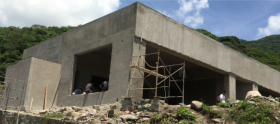 In Mexico, to begin with, we don’t use sheetrock and we don’t use wood as much as in North America. We use mostly adobe bricks and we use concrete. So, it’s very difficult for a house to fall down in Mexico because of the way our culture is you build a house not to fall; it’s a “forever house.”
In Mexico, to begin with, we don’t use sheetrock and we don’t use wood as much as in North America. We use mostly adobe bricks and we use concrete. So, it’s very difficult for a house to fall down in Mexico because of the way our culture is you build a house not to fall; it’s a “forever house.” If you’re coming to build a house here, my recommendation is go and see our building department in the county. Talk...
 In Mexico, to begin with, we don’t use sheetrock and we don’t use wood as much as in North America. We use mostly adobe bricks and we use concrete. So, it’s very difficult for a house to fall down in Mexico because of the way our culture is you build a house not to fall; it’s a “forever house.”
In Mexico, to begin with, we don’t use sheetrock and we don’t use wood as much as in North America. We use mostly adobe bricks and we use concrete. So, it’s very difficult for a house to fall down in Mexico because of the way our culture is you build a house not to fall; it’s a “forever house.” If you’re coming to build a house here, my recommendation is go and see our building department in the county. Talk to the director of the building department to make sure that your plans are authorized so you have the right permits and that your architect “dots his i’s” and “crosses his t’s” so you don’t have any surprise hiccups along the way.
You’re supposed to have the correct permits from the government and have them authorized. Your “albañiles” are the builders, and the architect is called the maestro, which is like a teacher of the building and tells people what to do on the job. The job coordinators have the right permits and also have the insurance for the people who are on the job.
The insurance for the workers on your house is through IMSS, which is the Mexican Institute of Social Security. It is not Social Security in the United States as we think of our security cards. IMSS provides insurance to make sure the workers are insured in case of anything. There are people who walk around from the government making sure everyone has job permits or they’ll shut them down. The fines to not have the permits are very expensive so if you’re building something, get your permits, make sure you have everything in order, pay people the right payments, and make sure, if you’re coming to Mexico and building a house, hire someone who knows what they’re doing.
For example, you may ask an owner of a hardware store, Luis Lopez, “Luis, I would like to build a house.” He will tell you, “Alright sir, (he speaks English) I can tell you who to recommend, who you need to see, and make sure you get the right type of permits. Go see the director of the building department. See the architect to make sure your plans meet the standards for the neighborhood you’re building in.” The people here go out of their ways. If you ask one question, they will see how they can help you. And it’s also the way you ask things. Always use your “please” and “thank you.” They really like that.
If you hire some sub-contractors that do not pay their workers IMSS, and someone falls on your property, you’re responsible. If you are unaware of your sub-contractors not paying IMSS, let the IMSS know and get up to date and ask. See someone to find out how you can fix your situation. You’re notified when you don’t pay IMSS. It’s not just a random document that comes in. you’ll receive a notification in Spanish. If you receive a notification, the first thing you’d do is to call ask someone who speaks Spanish and ask what this states and call an attorney or call a concierge. In this type of things, there are people who specialize in this area that you can have help if you would not like to call an attorney. It’s not generically that you have to always call an attorney. An attorney isn’t just someone who goes and takes… we do take care of these problems but there are other people who also can help you.
(Construction workers building a house with cement, Lake Chapala,Mexico, pictured.)
Posted July 26, 2017



.png)